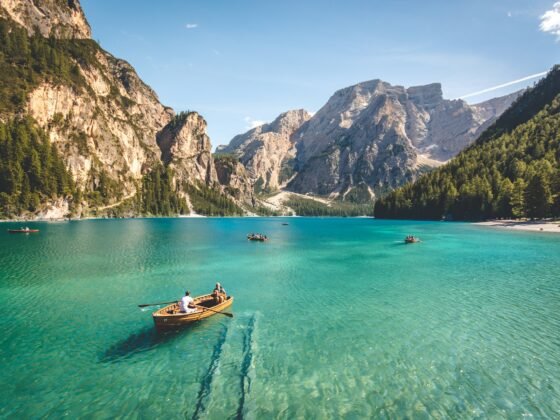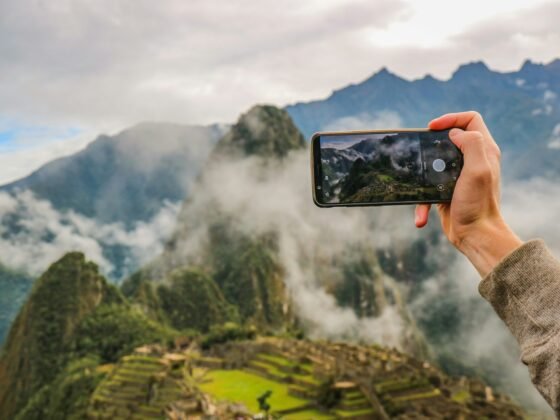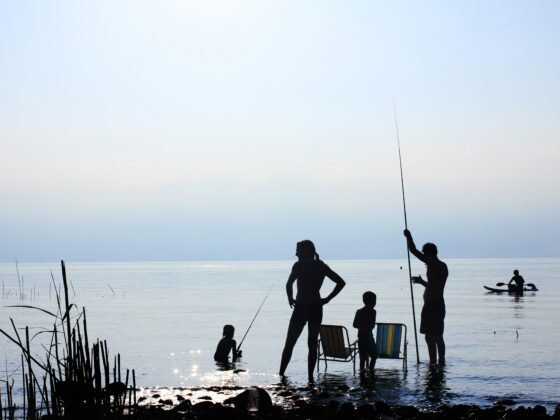Backpacking offers a kind of freedom most other travel styles can’t. You carry everything you need, move at your own pace, and spend more time in natural spaces than in lines or lobbies. But freedom comes with friction — literal and figurative.
Extended walking, limited access to clean food or restrooms, climate shifts, and repetitive strain can all wear down your body and immune system, even if you start the trip feeling strong.
Build a Daily System That Keeps Your Body in Sync
The key to avoiding long-term health issues while backpacking isn’t reacting to pain — it’s staying one step ahead. Your body is constantly adjusting to new weight, climate, altitude, sleep patterns, and food sources. Ignoring those shifts leads to breakdown, not resilience.
Foundational Practices for Daily Maintenance
Start with these four simple, repeatable habits — none of which require gear or gym access:
- Active joint and spine mobilization every morning: Arm circles, shoulder rolls, neck nods, slow squats, hip swings. Just 5 minutes keeps your nervous system alert and joints fluid.
- Hydrate with electrolytes, especially after long days in sun, altitude, or humidity. Don’t just drink water — include salt, potassium, and magnesium sources like tablets or salty snacks.
- Stretch your hip flexors and calves each night, especially after walking uphill, wearing a pack, or sitting for long rides. Tightness here leads to lower back strain and knee pain.
- Scan your body for soreness or swelling — this mental habit helps you catch overuse early and adjust your load or pace before it turns into injury.
Backpacking isn’t a marathon every day. It’s a series of repetitive stress loads. So learn what your version of overuse feels like and respect it.
Treat Your Spine Like Equipment — It Needs Regular Attention
Your spine isn’t just a structure. It’s the pathway for your entire nervous system, and it handles a disproportionate amount of pressure during travel. A pack that fits poorly, shoes that throw off your gait, or sleeping on hard ground every night can create cumulative issues — often showing up days after the initial stress.

Photo by: Kaboompics.com, Pexels
It’s tempting to focus only on blisters or sore knees, but most backpacking discomforts originate in the spine: compression, poor alignment, or tension in supporting muscles.
When Chiropractic Care Can Make a Difference
If you’re on a multi-week trip and start to notice pain that won’t go away — especially pain that shifts sides, radiates down limbs, or worsens after sleep — it’s worth seeking out a chiropractor who specializes in mobility and sports recovery.
Chiropractic adjustments aren’t about cracking bones for relief. When done correctly, they realign the spine, improve posture, reduce inflammation, and restore nerve communication — especially important if you’re carrying 20 to 40 pounds daily.
Look for chiropractors in towns where you plan to rest or resupply. Backpacking-heavy regions often have clinics that understand hiker needs. For example:
- Trail towns along the Appalachian Trail, like Damascus, VA or Great Barrington, MA, often have walk-in chiropractors
- Outdoor hubs like Boulder, CO or Bend, OR, where chiropractic care is integrated with physiotherapy and sports massage
- Mountain regions in Europe, such as the Alps or Dolomites, where wellness-focused villages cater to trekkers with access to osteopathy and spine alignment services
Even one session mid-trip can reverse developing imbalances and prevent long-term problems. If professional care isn’t available, consider packing a lightweight massage ball, stretch strap, and posture corrector to manage issues on your own.
Understand What Fuels You — and What Slows You Down
Backpackers often eat what’s available, cheap, or lightweight. But after several days, low-quality fuel catches up with digestion, energy levels, and immune system.
Practical Food Choices That Keep You Moving
Keep your meals simple, but intentional. Try to include these food categories daily, even in minimalist form:
- Complex carbs with fiber: Oats, brown rice crackers, lentil-based trail mixes, dried fruit with no added sugar
- Clean protein: Hard-boiled eggs, shelf-stable tuna packs, jerky without nitrates, nut butters, chickpea flour snacks
- Healthy fats: Olive oil packets, chia seeds, walnuts, flax crackers, dark chocolate with high cacao
- Hydration support: Herbal teas, broth powder, salted nuts, cucumber or lemon for water flavor if you’re picky about taste
Avoid relying exclusively on processed snack bars or sugary gels. They spike energy but crash your system fast — especially on high-altitude or humid hikes. And beware of too many dehydrated meals with high sodium but low nutrient density. They’ll fill you up but won’t help you recover.
If you do experience gut issues, use that rest day to switch to broth, rice, banana, and ginger — and reduce caffeine or dairy until your system resets.
Sleep Isn’t Optional — It’s Your Only Recovery Window
Sleep deprivation builds up like debt. On short trips, you can power through it. On long backpacking routes, poor sleep leads to mood swings, poor decision-making, weak immunity, and muscle breakdown.

Photo by Keira Burton, Pexels
The body repairs itself during sleep, especially deep sleep. And when you’re moving daily, that repair cycle matters. A noisy campsite, rocky ground, or poor temperature regulation can disrupt hours of potential recovery.
Tools and Habits That Support Sleep on the Trail
You don’t need fancy setups. But you do need a system that supports rest no matter where you land. Consider these additions to your pack:
- An inflatable pillow or compressible memory foam — your neck alignment is just as important as your back
- A foam pad or insulated inflatable mattress, with an R-value of at least 3.5 for three-season use
- Earplugs and a lightweight sleep mask — both weigh less than an ounce and block out noise and light
- A consistent wind-down ritual: 10 minutes of stretching, no phone light, and a protein snack can cue your body into sleep mode
If you’re in mosquito-heavy areas or extreme humidity, invest in a bug-proof hammock system or a mesh bivy that lets you sleep cooler and bite-free. Thermal discomfort is one of the top reasons backpackers wake up repeatedly and fail to recover.
Health on the Trail Is About Ownership, Not Luck
It’s easy to assume that health while backpacking is a matter of luck — no rolled ankles, no stomach bugs, no bad weather. But the deeper truth is that long-term wellness on the trail comes down to ownership.
You own how you pack, how you listen to your body, how you adapt when things shift, and how you ask for help — or build systems that reduce the need to.
Image: Eric Sanman, Pexels












